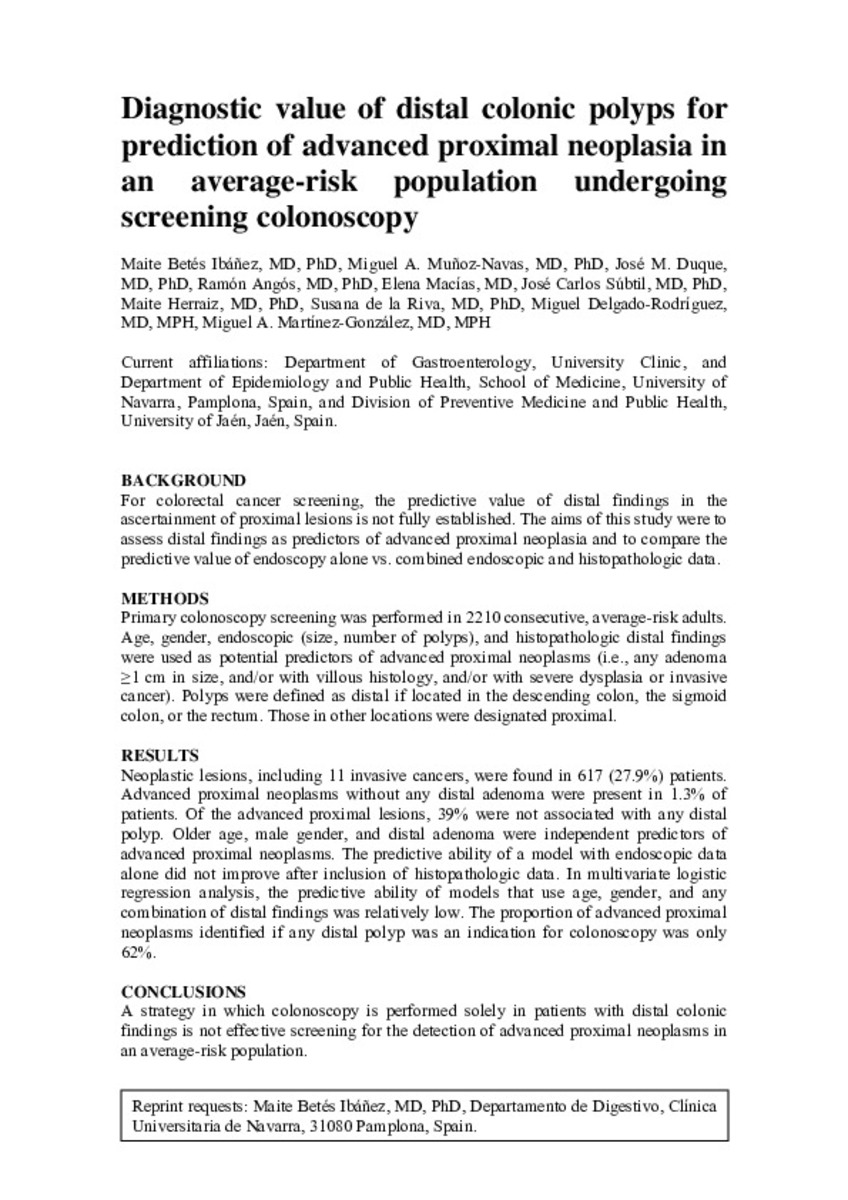Diagnostic value of distal colonic polyps for prediction of advanced proximal neoplasia in an average-risk population undergoing screening colonoscopy
Palabras clave :
Adenoma/diagnosis/epidemiology
Colonic Neoplasms/diagnosis/epidemiology
Colonic Polyps/epidemiology
Fecha de publicación :
2004
Cita:
Betes Ibanez M, Munoz-Navas MA, Duque JM, Angos R, Macias E, Subtil JC, et al. Diagnostic value of distal colonic polyps for prediction of advanced proximal neoplasia in an average-risk population undergoing screening colonoscopy. Gastrointest Endosc 2004 May;59(6):634-641.
Aparece en las colecciones:
Estadísticas e impacto
0 citas en

0 citas en

Los ítems de Dadun están protegidos por copyright, con todos los derechos reservados, a menos que se indique lo contrario.








